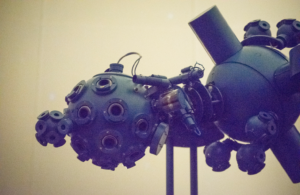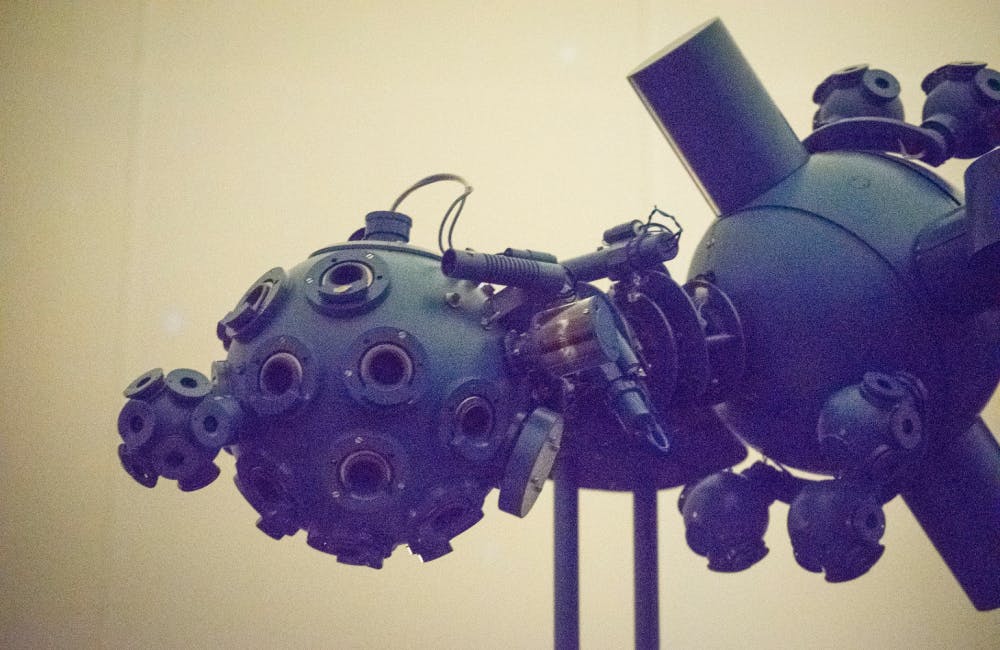By Kevin Shaw
Staff Writer
Thanks to the Astronomy Club and its telescope, students were able to see Jupiter up close and personal, even spotting its jetstreams. They also saw history unfold as they spotted Jupiter’s extra-terrestrial moons that formed the basis for Galileo’s heliocentric model of the solar system.
After some ongoing unfortunate weather, the Astronomy Club was finally able to host its Star Party on Quimby’s Prairie on Tuesday, April 11. The fun and informative gathering brought together lovers of space and seekers of knowledge.
As a cleverly crafted playlist of space-related songs radiated through the campus, the Star Party could be heard before it was seen. The songs ranged from Muse’s “Supermassive Black Hole” to tracks off Hans Zimmer’s “Interstellar (Original Motion Picture Soundtrack).” The music built an atmosphere of discovery and awe as students inspected their celestial neighbors.
Due to persistent cloud coverage, the telescope was limited to viewing Jupiter, its Galilean moons and the moon. Despite the limited viewing subjects, the glimpses were a spectacular site in the vibrant night sky.

A few clouds wouldn’t ruin any good party, and the Star Party was no exception. The Astronomy Club commandeered a lab room in the Physics Building and screened a show featuring the iconic Bill Nye the Science Guy.
The lab room acted as a vestibule to the main event — a planetarium presentation led by Ian Reed, a sophomore physics major, and Will Braverman, a sophomore physics major. Reed informed the crowd about the dangers of Venus and shared the facts behind Pluto no longer being a planet.
Meanwhile, Braverman presented a view of the magnificent rings of Saturn, the rust-coated surface of Mars and the vastness of the Milky Way using the school’s new Digitarium Planetarium System — a new and improved planetarium projector.
“(The new system is) much easier to use than the old Skymaster unit we had before,” Braverman said. “Only a few people at TCNJ actually know how to use (the Skymaster). This new one is way more accessible.”
And accessible it was. Reed and Braverman hosted their show with nothing more than a projector remote and an Xbox controller.
Not only is it easy to use, but the Digitarium also has the most up-to-date view of the solar system. On the virtual tour, students got a high-resolution peek at Pluto, a view that didn’t exist two years ago.
“There are texture packs and updates coming out. Things like the Kuiper Belt can be downloaded and viewed and things are patched in as we learn about them,” Braverman said. “While the Skymaster is more for viewing distant stars, the Digitarium gives us a better view of the planets in our solar system.”
While the Astronomy Club hosts star parties once a semester, according to Reed, they would love to host more. With more access to telescopes and the planetarium, the Astronomy Club could spread their love of the cosmos to more students, faculty and staff on campus.
For students who missed the Star Party, there are telescopes available for use Monday through Thursday in the Science Complex’s observatories. There, students can use large telescopes that offer a great view of cosmic neighbors near and far.







